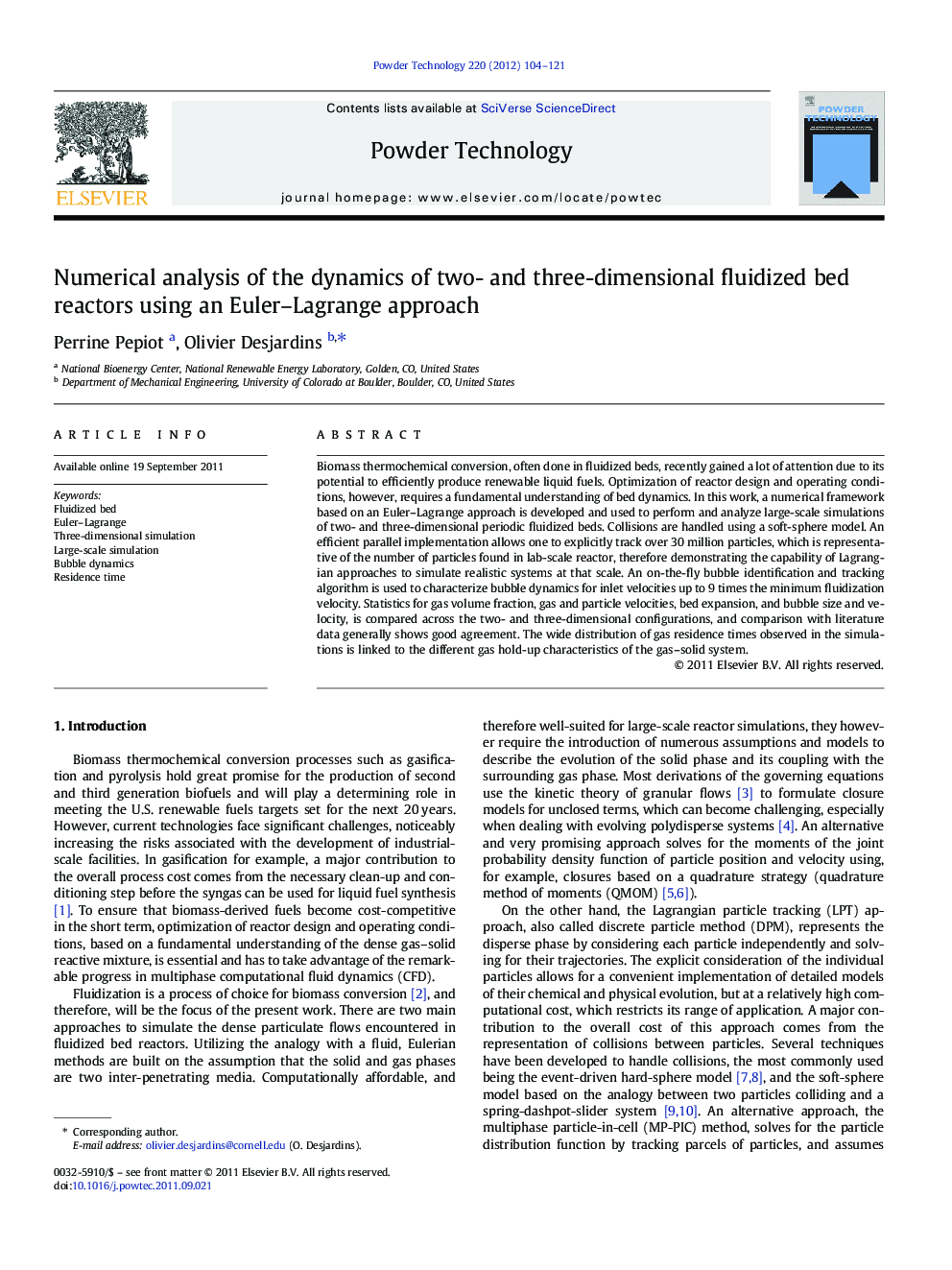| Article ID | Journal | Published Year | Pages | File Type |
|---|---|---|---|---|
| 237299 | Powder Technology | 2012 | 18 Pages |
Biomass thermochemical conversion, often done in fluidized beds, recently gained a lot of attention due to its potential to efficiently produce renewable liquid fuels. Optimization of reactor design and operating conditions, however, requires a fundamental understanding of bed dynamics. In this work, a numerical framework based on an Euler–Lagrange approach is developed and used to perform and analyze large-scale simulations of two- and three-dimensional periodic fluidized beds. Collisions are handled using a soft-sphere model. An efficient parallel implementation allows one to explicitly track over 30 million particles, which is representative of the number of particles found in lab-scale reactor, therefore demonstrating the capability of Lagrangian approaches to simulate realistic systems at that scale. An on-the-fly bubble identification and tracking algorithm is used to characterize bubble dynamics for inlet velocities up to 9 times the minimum fluidization velocity. Statistics for gas volume fraction, gas and particle velocities, bed expansion, and bubble size and velocity, is compared across the two- and three-dimensional configurations, and comparison with literature data generally shows good agreement. The wide distribution of gas residence times observed in the simulations is linked to the different gas hold-up characteristics of the gas–solid system.
